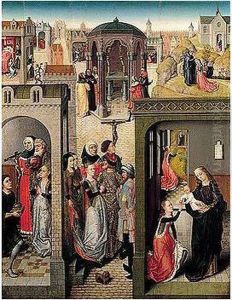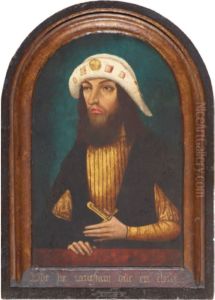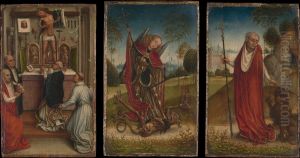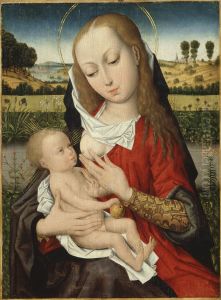Master Of The Legend Of Saint Catherine Paintings
The Master of the Legend of Saint Catherine is not identified by a personal name but is known by this notational title given to an anonymous Flemish painter or group of painters active in the latter half of the 15th century. The name derives from a series of paintings depicting the life and martyrdom of Saint Catherine, which were particularly expressive and of high quality. The artist or workshop was most likely based in Brussels, which was a significant center for panel painting and the production of altarpieces during the period.
The body of work attributed to the Master of the Legend of Saint Catherine is marked by a refined and detailed approach to painting, featuring intricate landscapes and interior scenes, as well as a nuanced handling of light and shadow. The figures in these works are typically rendered with an attention to personality and emotional expression, indicative of the evolving styles of the time that moved towards greater naturalism.
The master's work reflects the transition from the Late Gothic to the Early Renaissance in Northern Europe. The influence of artists like Rogier van der Weyden is evident, as are the emerging trends from Italy, such as the use of perspective and volumetric depiction of figures. However, the Master of the Legend of Saint Catherine maintained a distinctly Northern European sensibility in the use of color and detail, especially in the rendering of textiles and nature.
Although the exact identity of the Master of the Legend of Saint Catherine remains unknown, the designation allows art historians to group a coherent body of work that shares stylistic and thematic characteristics. This has enabled a better understanding of the artistic production and cultural context of Brussels in the late 15th century. The works attributed to this master are considered significant contributions to the Flemish painting tradition and are studied for their artistry as well as their iconographic content.



